ディズニーの原作『美女と野獣』あらすじと感想~ディズニー版との違いはどこに?その違いから見るディズニー版の魅力とは
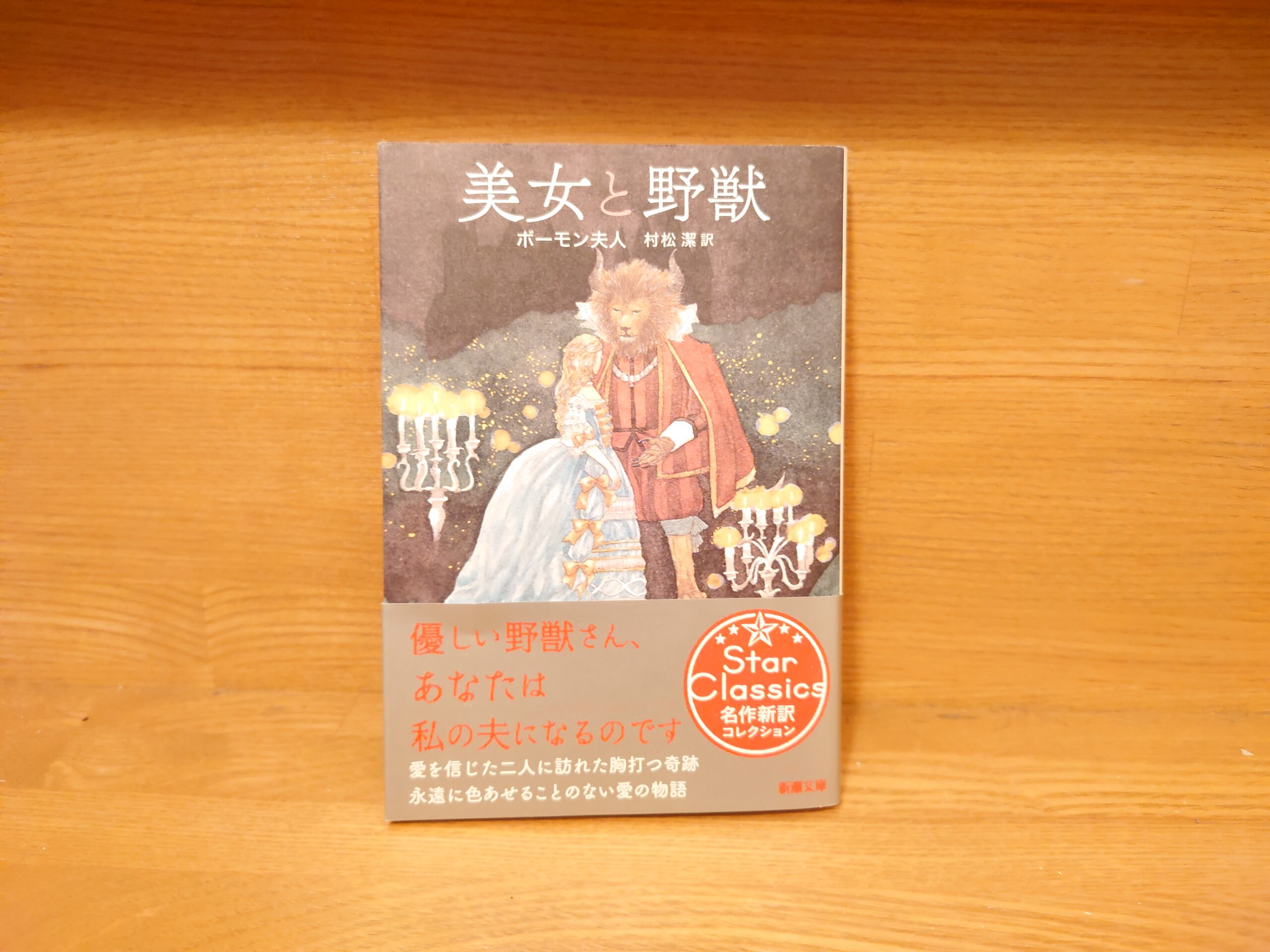
ディズニーの原作!ボーモン夫人『美女と野獣』あらすじと感想~ディズニー版との違いはどこに?
今回ご紹介するのは1756年にフランスの作家ボーモン夫人(ジャン=マリ・ルプランス・ド・ボーモン)によって発表された『美女と野獣』です。私が読んだのは新潮社、村松潔訳版です。
早速この本について見ていきましょう。
裕福な商人の末娘ベルは、とびきりの美貌と優しい心根の持ち主。ある日、父親が見るも恐ろしい野獣に捕えられると、彼女は身代わりを買って出た。ベルに恋心を抱いた野獣は、正直さに心を打たれて彼女を家族のもとに返すが、喪失の悲しみに身を焦がし、命を捨てようとする。その姿を目の当たりにしたベルは、ある決意を胸にする――。人生の真実と厳しさを優しく伝え、時代と国を超えて愛され続けてきた物語13編を収録。
Amazon商品紹介ページより
私が本作ボーモン夫人版の『美女と野獣』を読んだのは、何と言ってもディズニー映画の影響です。私はこの映画が大好きでディズニー作品の中でも一番のお気に入りです。そんな『美女と野獣』の原作を読んでみたい!原作と映画の違いがわかればディズニーのすごさがよりわかるのではないか、そう思い私はこの原作を手に取ることにしたのでありました。
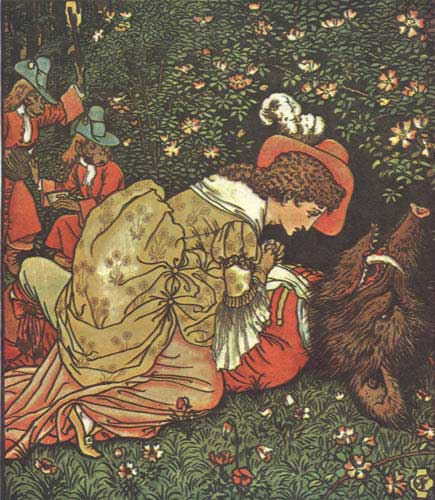
さて、原作の『美女と野獣』の作者は記事冒頭で述べましたように、フランスの作家ボーモン夫人の手によるものです。ですがことは少し複雑で、この作品はボーモン夫人が1740年に発表されたフランス人作家ヴィルヌーヴ夫人の『美女と野獣』を下敷きに子供でも読みやすいように短く書き直したものになります。
つまり、『美女と野獣』のオリジナルは1740年のヴィルヌーヴ版で、そこから1756年のボーモン版が生まれたことになります。そして世界的にこの物語が有名になったのはボーモン版がきっかけで、以後世界的に読まれたのはヴィルヌーヴ版ではなくボーモン版だったのでした。ディズニーが参考にしたのもこのボーモン版になります。
ヴィルヌーヴ版とボーモン版の違いに関しては新潮社版の『美女と野獣』の巻末に詳しく解説されていますのでここでは深くは立ち入りませんが、ざっくり言うならば大人向けの小説か童話かという違いがあります。ヴィルヌーヴ版は分量も多く、内容も煩瑣と言っていいほど肉付けがなされています。私も白水社発刊のヴィルヌーヴ版を読んだのですが、これは子どもはおろか大人でも気楽に読むのは厳しいです。それに対しボーモン版は文庫本で30ページほどで内容もすっきりしているので非常に読みやすいです。こうした点もボーモン版が人気となった理由の一つでしょう。
では、そのボーモン版はどのような物語になっているのでしょうか。
私は勇んでこの作品を読み始めたのですが、冒頭からいきなり驚くことになりました。なんと、パパは発明家ではなく裕福な商人で、彼には3人の息子と3人の娘がいるとのこと!その末の娘がベルだったのです。この時点で全く違いますよね!
そして3人の兄達はこの物語ではほとんど存在感がないのですが、上の姉2人は違います。むしろこの物語の鍵となる存在とも言えます。彼女たちは美人ではあるもののとにかく性格が悪く、高慢でわがままでした。親がお金持ちであることを鼻にかけ、舞踏会や観劇に明け暮れる日々を過ごしていたのでした。
それに対し末っ子のベルはとびっきりの美人であるにも関わらず優しくて親思いの素晴らしい娘でした。本が大好きなのはディズニー映画と一緒です。そんなベルを姉たちは心底嫉妬し、馬鹿にしていたのでありました。
しかしそんな日々も突然終わりを告げます。パパの商売が急速に傾き、家を手放して田舎の農地でひっそりと暮らす羽目になってしまったのです。パパと兄たちは畑を耕し、ベルは家事に専念します。姉たちはどうしていたかというと、何もせずにかつての豪勢な暮らしを懐かしんでダラダラしているだけでした。彼女たちはベルに全ての仕事を押し付け、彼女をいじめました。おぉ、これはまるでシンデレラ方式。ベルはこうした仕打ちにも黙々と耐える日々を送っていました。
そんな生活が続いてから一年が経ったとき、街からある手紙が届きます。行方不明だった父の商船が無事に港に帰還したというのです!これは吉報!これで商売も復活だ!家族も大喜びです。
しかし抜け目ない姉達はパパにお土産をねだることを忘れません。高価なドレスや髪飾りなどたくさんの装飾品をパパにおねだりし、街に向かうパパを見送ったのでした。ただ、ベルはというとそんな姉たちのおねだりによってお金がなくなってしまうことを見越していたので何も頼みませんでした。それはそれで寂しいとパパが言うのでそこでベルが望んだのが「バラの花」だったのです。さあ、いよいよ私達もお馴染みのバラの花が登場しました。このバラの花が彼女たちの運命を動かすことになります。
さて、街に到着したパパでしたが災難が待ち受けていました。なんと、彼の商品に対して裁判が起こされ、結局彼のもとにはほとんどお金が残らない状態になってしまったのです。つまり、パパは来たときと同じ貧乏のまま家に帰らねばならなくなってしまったのでした。
見込みがはずれてとぼとぼ帰宅するパパ。しかも家路へと続く大きな森を通り抜けている最中、パパは道に迷ってしまいます。行きの時は迷わなかったのに何たる失態!あぁ、しかも雪も降ってきた!風も強い。狼もやって来るかもしれない!このままでは死んでしまう!焦るパパでしたがその視線の先に大きな明かりが見えました。近づいてみるとそれは大きなお城だったようです。いよいよ私達も知る『美女と野獣』っぽくなってきました。
パパは恐る恐るお城へと入っていきます。しかし、中には誰もいません。人の気配が全くないのです。
それでも大きな部屋に入るとテーブルには一人分の食器と山ほどの食事が用意されていました。しばらく暖炉のそばで身体を温めて誰かが来ることを待っていたパパですが、いよいよ空腹に耐えかねてこの食事を食べてしまいます。
そしてこの部屋を出て寝室を見つけるとそのままそこで寝てしまうことにしました。もう疲れ切ってヘトヘトだったのです。
あれ?野獣は出てこないの?と思われた方も多いのではないでしょうか。そうなのです。ここに来てもまだ野獣が出てこないのが原作なのです。
翌日、パパは朝の10時に目を覚ましました。するとびっくり、そばに着替え用のきれいな服が置いてあったのでありました。誰が置いたのでしょう。誰かは分かりませんが、パパをおもてなししている何者かがこの城には存在するようです。ルミエール?コグスワース?さあ一体誰なのでしょうか。
そして昨晩夕食を取った大きな部屋へ下りていくとココアまで用意されていました。感謝しながらそれを飲み干し、いよいよパパは城を出発することにします。馬を迎えに庭へ出ていくと、そこに美しい花をつけたバラの木がありました。ああ、ちょうどよい!ベルのお土産にしよう!そしてそのバラの枝を折り持ち帰ろうとしたその瞬間、大きな叫び声と共に恐ろしい野獣が目の前に姿を現したのでありました。いよいよ我らが野獣の登場です。
映画のように問答無用でパパは牢屋へ連行されるかと思いきや原作ではまるで違ったやりとりが展開されます。せっかくですのでその箇所を見ていくことにしましょう。
「恩知らずなやつめ」と、野獣は恐ろしい声で言いました。「わたしの城に迎え入れて命を救ってやったのに、そのお返しに、わたしがこの世界の何よりも愛しているバラを盗もうとするなんて。この過ちを償うためには死んでもらうしかないが、神に赦しを乞うために十五分だけやろう」
商人はその膝にすがりついて、両手を合わせて言いました。「殿下、どうかお許しください。娘のひとりから頼まれたバラを摘むことで、あなたの気分を害することになろうとは想像もしなかったのです」
「わたしは殿下などではない」とその怪物は答えました。「野獣なのだ。わたしはお世辞は大嫌いで、人には考えているとおりのことを言ってほしいと思っている。だから、追従でわたしの心を動かせるとは思わないことだ。だが、娘があるとおまえは言った。それなら、その娘のひとりが自分の意志でおまえの身代わりに死ぬことを条件に、おまえを許してやろう。さあ、つべこべ言わずに出ていくがいい。娘が身代わりになることを拒んだら、おまえは三月後には戻ってくると誓うんだ」
心やさしい商人は自分の娘をこんなに醜い怪物のために犠牲にするつもりはありませんでした。しかし、〈少なくとも、もう一度娘たちを抱きしめる喜びは味わえる〉と考えたので、戻ってくることを誓いました。すると、野獣はいつでも好きなときに立ち去っていいと言い表した。「しかし」と野獣はつづけました。「手ぶらで帰らせるのはわたしの望むところではない。おまえが泊まった寝室に戻るがいい。そこに大きな空の箱があるから、なんでも好きなものを詰めてかまわない。それをおまえの家に運ばせてやろう」
新潮社、ボーモン夫人、松村潔訳『美女と野獣』P38-39
いかがでしょうか。これには驚きですよね。野獣はパパを牢屋に入れるどころか好きなものを手土産として持ち帰ってもよいとまで言ってのけたのです。現にパパは大量の金貨を持ち帰りました。ものすごい太っ腹です。
原作の野獣はこの後もずっと優しく親切な紳士です。外見こそ醜い獣ですがその心は最初から優しいものがあったのでした。
そして辛くも逃げ帰ったパパはこの経緯を娘たちに話して聞かせます。するとベルが身代わりになることを志願。パパはなんとか引き留めようとしますがベルの覚悟は固く、翻す気配もありません。その覚悟にパパもついに折れ、ベルを伴い野獣の城へと二人で引き返します。そしてベルは野獣と暮らすことになったのでした。
こうざっくりとあらすじ的に言ってしまうとさらっと呑み込んでしまえますが、よくよく考えるとパパもなかなかです。結局最後の最後で自分の命惜しさに愛する娘を差し出したのですから・・・。ここもディズニー版とは大きく異なります。
そして共に暮らしていくうちにベルは親切で優しい獣に少しずつ心惹かれていくのですがそこはやはり原作。ある種の残酷さがあります。ベルは彼の優しさに惹かれはするのですが、どうしてもその外見を受け入れられないのです。「あんなにやさしい心の持ち主なのに、あんなに醜いなんて、ほんとうに残念だわ!」と思わずにはいられないのです。
また、野獣の求婚も原作の特徴のひとつです。ディズニー版では野獣は自分から求婚はしませんし、物語の前提としてバラの花が散るまでに愛し愛されることがその条件にありました。しかし、原作ではそのタイムリミットもありませんし、ロマンティックな演出もありません。ベルが来てまもなく「ベル、わたしの妻になりたくないかね?」と聞いてしまうという何ともムードぶち壊しの発言すらしてしまいます。
こうした二人の生活が三カ月ほど続き、二人の仲はより親密になったのではありますがやはりベルとしては結婚はできないというのがその本心でした。彼はいい人だけど、醜い野獣の妻にはなりたくないのです。
そして優しい野獣はベルの望みもわかっていました。彼女はパパに会いたがっていたのです。映画ではパパがピンチの状況でしたが、原作ではそうではありません。しかし3カ月も離ればなれでこれからも永遠に会えないということにベルは苦しんでいたのでした。そこでベルも思いきって野獣に「パパと会えない悲しみで私は死んでしまうかもしれない」と打ち明けます。
その訴えに対し野獣は苦渋の決断をしました。「あなたを悲しませるくらいなら、自分が死んだ方がましだ。あなたはもう帰ってもよい。だが哀れな野獣は悲しみで死んでしまうだろうけれど」とベルに告げたのです。
そんな野獣の優しさにベルも心を打たれ涙を流しながら「八日後に必ず戻ってきます」と約束します。そして野獣は魔法の指輪を彼女に渡しました。これをテーブルに置けばすぐにお城に戻って来られるという不思議な指輪でした。
そしてベルは家へと戻りパパとの再会を喜びました。
さあ、問題はここからどうなるかです。
ディズニー映画ではここからガストンたちが城へ乗り込み大団円へと急加速していますが、何せ原作ではガストンはそもそも存在しません。物語を動かすあの愛すべきマッチョマンがいない以上、どうフィナーレを迎えるのでしょうか。
その鍵があの意地悪な姉達だったのです。
姉たちはベルから城のことや野獣との幸せな生活を聞き、例のごとく激しい嫉妬を抱きました。そして「八日後までに戻る」という約束のことも聞きだし、彼女たちは悪だくみを思いつきます。「もしその日までに帰らなければ野獣は怒り、ベルを食べてしまうのでは?」そう考えた姉たちはベルの引き留め工作にとりかかります。その作戦は成功し、ベルはさらに8日間家に留まることにしたのでありました。
しかし帰宅から10日目の夜、ベルはある夢を見ます。野獣が庭の草の上に倒れていて今にも死にそうになっている夢でした。ベルはさっと跳ね起き、涙を流して胸の中でこうつぶやきました。
「あんなにも深い心づかいをしてくれた野獣さんを悲しませるなんて」
新潮社、ボーモン夫人、松村潔訳『美女と野獣』P52
「わたしはとても悪い女なのではないかしら?あんなに醜いのも、あんなに知性に乏しいのも、彼のせいではないのに。わたしはどうして結婚することを拒んだのかしら?彼といっしょになれば、姉さんたちより幸せになれそうなのに。ひとりの女を満足させるのは夫の男前のよさでも頭のよさでもなく、性格のよさと美徳と心づかいで、野獣さんはそのすべてを兼ね備えているというのに。わたしは彼を愛しているわけではないけれど、敬意と友情と感謝の気持ちはもっている。だから、彼を不幸にするわけにはいかないわ。そんなことをすれば、自分の恩知らずな行ないを一生後悔することになるでしょう」
新潮社、ボーモン夫人、松村潔訳『美女と野獣』P53
う~ん、惜しい!ここではまだ「愛」ではないのです。やはりまだ醜い外見がネックになっているようですが一気に彼女の心は野獣との結婚へと進んでいきます。
そしてベルは野獣からもらった魔法の指輪ですぐに城へと戻ります。
しかし、待てども待てども野獣は来ない。いつもなら夜の九時になると必ずやってくるのに・・・
ベルは不安になってきました。自分のせいで野獣は悲しみのあまり本当に死んでしまったのではないか!
ベルは大声で名前を呼びながら城中を走り回ります。しかしどこにもその姿はありません。絶望していたベルですが、ふと夢のことを思い出します。もしかしたら庭にいるかもしれない!
急いで駆け出すとやはりそこに野獣はいました。しかし倒れていて生きているか死んでいるかもわかりません。顔の恐ろしさも忘れて体にすがりつくと、かすかに心臓の音が聞こえてきました。まだ野獣は生きていたのです。ベルは野獣の顔に水をかけると、彼が目を覚ましました。
「あなたは約束を忘れたね。あなたを失った悲しみで、わたしはなにも食べずに死んでいくことにしたんだ。最後にもう一度あなたと会うことができたから、これで満足して死んでいける」
「いいえ、愛しい野獣さん。あなたはけっして死んだりしないわ」とべルは言いました。「あなたは生きて、わたしの夫になるのです。いまこの瞬間から、わたしはあなたの求婚を受けいれて、あなただけのものになることを誓います。ああ、悲しいことに、わたしはあなたには友情しか抱いていないと思っていました。けれども、いま感じているこの苦しみが、あなたに会えずには生きていけないことをわたしに教えてくれたのです」
新潮社、ボーモン夫人、松村潔訳『美女と野獣』P54
この瞬間、宮殿が光り輝き、花火が上がり、音楽が流れて、城中がお祭り騒ぎになりました。
そして今目の前で死にそうになっていた野獣の姿が消え、足元には天使のようにハンサムな王子様が横たわっていました。
ベルはこの王子様が野獣であることに気が付きません。野獣がどこへ行ったのかと王子様に聞かずにはいられませんでした。そして彼から全てが明かされます。
ディズニーでは王子様の目を見てベルは彼が野獣であることに気が付きますが、原作では何とも味気ない再会でした。この辺りもディズニー映画の素晴らしい演出です。
こうして二人で城内に入ると、ベルの家族みんながそこにいました。魔女がベルの家族をそこに移動させていたのです。これにはベルも大喜びです。
そして話はこれで終わりません。意地悪な姉達は魔女によって城の入り口に立つ石像に変えられてしまいます。「あなた達はその性格の悪さを改めるまでそこで彼女の幸せを眺めていなさい。まあ、あなたたちには無理でしょうがね」と皮肉交じりの罰を与えます。
そしてベルと王子様は二人で幸せに暮らしましたとさ、めでたしめでたし。
ということで原作は終了です。皆様お疲れ様でした。
さて、こう見てみるとディズニー映画がいかに原作と異なるかが一目瞭然ですよね。
まず魔女の呪いの設定がボーモン版ではほとんど出てきません。しかも映画の冒頭でそれを説明すると言うのは実に画期的でした。これによって野獣目線で物語に入っていくことが可能になり、さらに野獣とベルは本当に結ばれるのかというハラハラ感を味わうことになります。
また、先程も少し述べましたがあのガストンが原作には出てこないというのはとても重要です。ディズニー映画では彼が存在することによってベルの異質性が強調され、ストーリー上の動きも生み出されることになりました。
そして何と言っても原作ではルミエールやコグスワース、ポッド夫人など映画では不可欠のキャラクターたちが全く登場しません。これもディズニーの完全オリジナルです。彼らの存在によって暗い雰囲気の原作が一気に明るくコメディタッチに変身しました。魔女の呪いを逆手にとって「もの」に命を吹き込んだディズニー。こうした擬人化はディズニーの伝家の宝刀ですが、『美女と野獣』ほど効果的に使用されたものはないのではないでしょうか。
また1937年に公開されたディズニーの記念碑的作品『白雪姫』でも七人の小人にそれぞれ個性を与えコメディタッチにストーリーを改変していますが、本作『美女と野獣』でもそのディズニーイズムが継承されているという点にもぐっと来ます。
こうしたディズニー映画『美女と野獣』の改変には作詞家ハワード・アシュマンと作曲家アラン・メンケンの最強コンビが大きく関わっています。この作品についてクリストファー・フィンチの『ディズニーの芸術』では次のように解説されています。
この映画はディズニー・クラシックスの初期の最高傑作と比べてもひけをとらぬ秀作であった。実はウォルトは、1950年代初めにこの話の映画化を考えたのだが実現しなかった。40年後になって再びもち上がった計画は、初めの段階でつまずいたものの、結局、ハワード・アシュマンがエグゼクティブ・プロデューサーとなって製作が始まった。アシュマンの主張によって、チームは野獣に同情的な筋書きを作った。また、ヒロインのべルを大いにクローズアップした。第二幕は暗い舞台。コグスワースやルミエール、ポット夫人など城で働く人々は物に姿を変えられている。しかし、彼らを生き生きと登場させることで陰鬱さをやわらげている。アシュマンはまた、悪漢のガストンを人間ばなれした大男にした。べルと野獣の二人に対抗させるにふさわしい大男だ。当然ながら、この映画の音楽はアシュマンとメンケンによって作られた。
1991年、この映画が公開されるときには、野獣はさらに優しいキャラクターとなり(それで見た目が怖くなくなったというわけではないが)、べルは強いヒロインとなった。ガストンは上手に扱われ、初めは単に無法者が弱い者いじめをしているように見せ、クライマックスに近づくと本物の悪党となる。コミック・レリーフ(喜劇的な息抜き部分)はちょっと気取った扱いとなり、歌はムードを盛り上げている。美術演出、レイアウト、背景のすべてがディズニー・クラシックスの水準に戻り、CAPSシステムの魔術のおかげで、この作品はどこから見ても第一級品となった。
この映画は批評家の評もよく、観客にも大いにもてはやされ、アニメーションとしては観客動員数の新記録を作った。さらにすばらしいことに、『美女と野獣』は、映画部門の優秀作品としてアカデミー賞にノミネートされた。アニメーションがこのような栄誉を与えられたのは、映画史上始まって以来のことである。
講談社、クリストファー・フィンチ、前田三恵子訳『ディズニーの芸術』P99-100
アシュマンとアラン・メンケンのコンビは『リトル・マーメイド』も手掛けた最強コンビです。この2人は元々ミュージカル畑出身でそこで培った感覚をディズニー映画へもたらしました。
まさに『美女と野獣』はミュージカル的映画です。そのオープニングも7分を超える長尺のミュージックナンバーから始まります。これはそれまでのディズニー映画では前代未聞でしたが、見事にはまっています。他にも《一人ぼっちの晩餐会》や《美女と野獣》などディズニーを代表する楽曲が目白押しです。私がこの映画が大好きなのもこのミュージカル性にあります。そしてそこにディズニー得意の映像美やコメディが加わりまさに鬼に金棒。ストーリーの強さも相まって最強の作品と化しています。
原作を知ってから改めてディズニー映画を考えてみると、これがいかに見事な改変だったかがよくわかります。これぞディズニー!と大絶賛を贈りたい気分でいっぱいです。
そして原作とは少し話がずれてしまうのですが、私は最近東京ディズニーランドに行く機会がありました。そこで私はこの『美女と野獣』のアトラクションに乗ったのです。
正直、私はこのアトラクションに乗った後、涙をこらえるので必死でした。あまりに素晴らしい!このアトラクションを制作した人を抱きしめて称えたいと思ってしまうほど感動してしまいました。
ウォルト・ディズニーはディズニーランドを作る際、映画の二次元空間を現実の三次元空間に再現し、そこにゲストを入り込ませ、一緒に物語世界を体感することをその哲学にしていました。このことについては能登路雅子著『ディズニーランドという聖地』やリチャード・スノー著『ディズニーランド 世界最強のエンターテインメントが生まれるまで』などで詳しく書かれていましたが、私がこのアトラクションに乗った時はまだこれらの本を読んでいませんでしたのでそうしたことも何も知らずにいました。
ですがそれにも関わらずこのアトラクションの没入感は並外れたものを感じさせたのでありました。
特に私は《愛の芽生え》が流れている箇所のベルの「ねぇ、とても不思議」の「ねぇ」の音の響きがあまりに心地よかったのが記憶に残っています。あれはあの空間だからこその音の響きです。部屋のテレビやイヤホンでは感じられない感覚です。
また、最後の舞踏会のシーンでは私たちもまさにそこに参加しているという演出でした。そしてその前後左右の動きはまさに映画カメラのカメラワークのようにも感じさせられました。もちろん、ここでの音響効果も言うまでもありません。本当にですね、油断したら泣きますよ。
そしてその舞踏会が行われている部屋から私たちは後ろ向きに進んでいきます。その部屋から遠ざかるにつれベルと野獣がだんだん小さくなっていき、私達がこの『美女と野獣』の世界から離れ、現実世界に戻っていくことを感じさせられます。これは逆に言えば、私達がこれまで『美女と野獣』の世界にどれだけ没入していたかをゲストに感じさせる仕組みになっているのではないでしょうか。こうしたひとつひとつの作り込みに私はもう完全にノックアウトでした。感動でもう放心状態です。このアトラクションはぜひ皆さんにもおすすめしたいです。
さて、『美女と野獣』の原作からディズニーランドのアトラクションにまで話は飛んでしまいましたが、原作を読んでみることでディズニー版の『美女と野獣』の素晴らしさがもっともっと見えてくることになりました。
私たちはすでに出来上がった完成品の『美女と野獣』を観てきたわけですが、この作品が出来上がるまでには並々ならぬ苦労があったことでしょう。そのことに思いを馳せながら観る『美女と野獣』はきっとこれまでとは違った味わいが感じられるのではないでしょうか。私もいよいよこの作品が自分にとって大きな存在となっていることを感じています。
実に興味深い読書となりました。
以上、「ディズニーの原作『美女と野獣』あらすじと感想~ディズニー版との違いはどこに?その違いから見るディズニー版の魅力とは」でした。
Amazon商品ページはこちら↓
前の記事はこちら
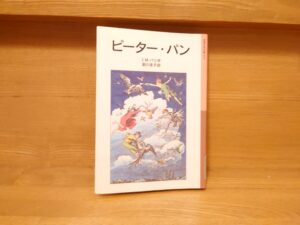
関連記事
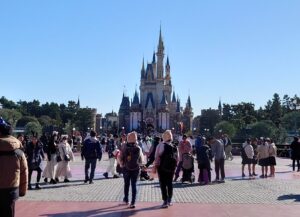
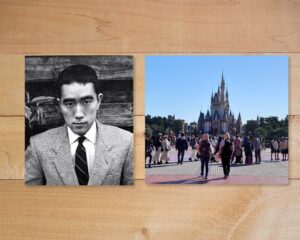
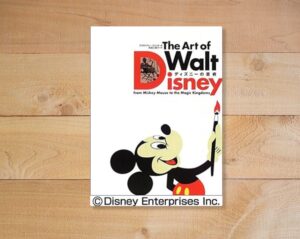
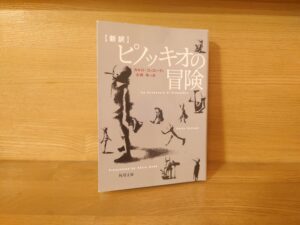
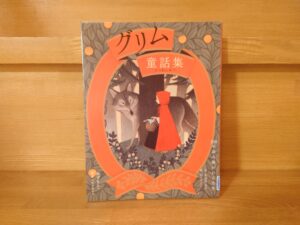
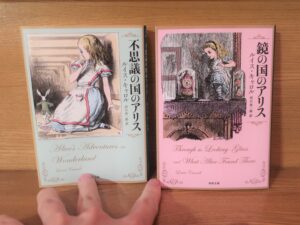
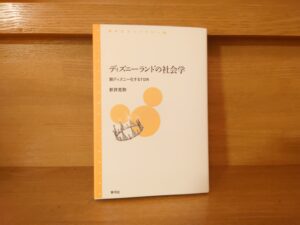
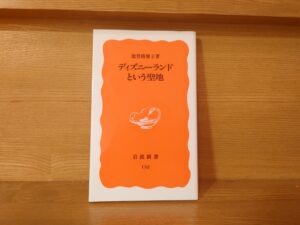

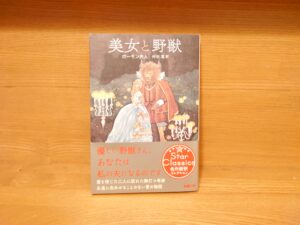
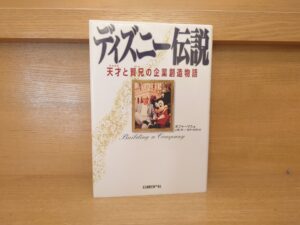
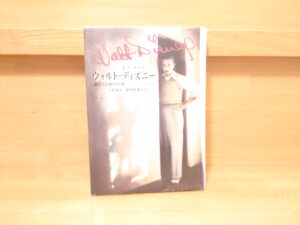
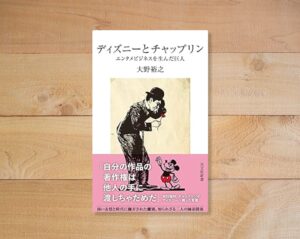
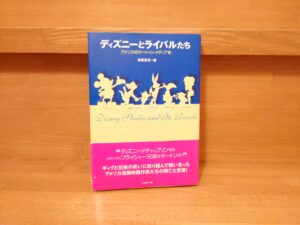
コメント